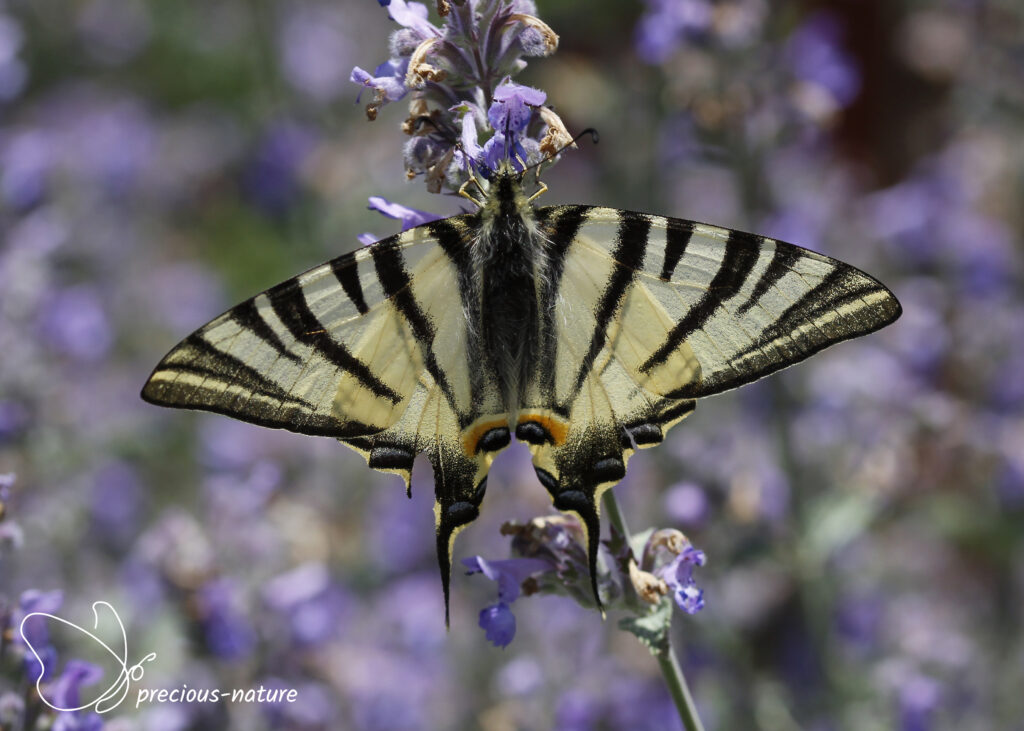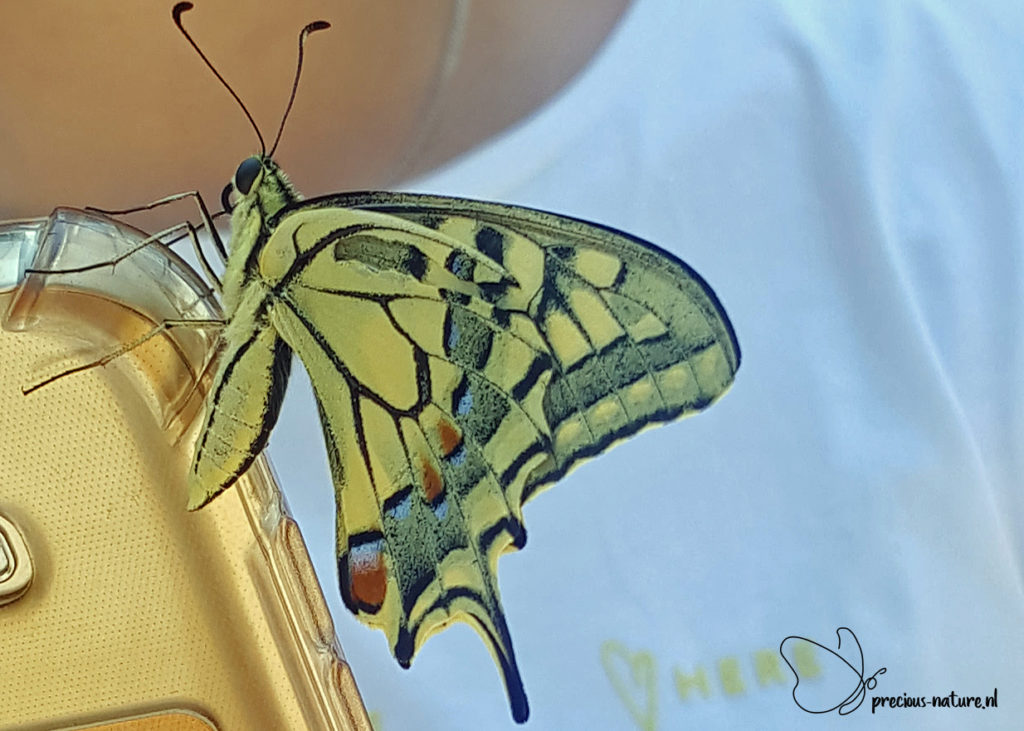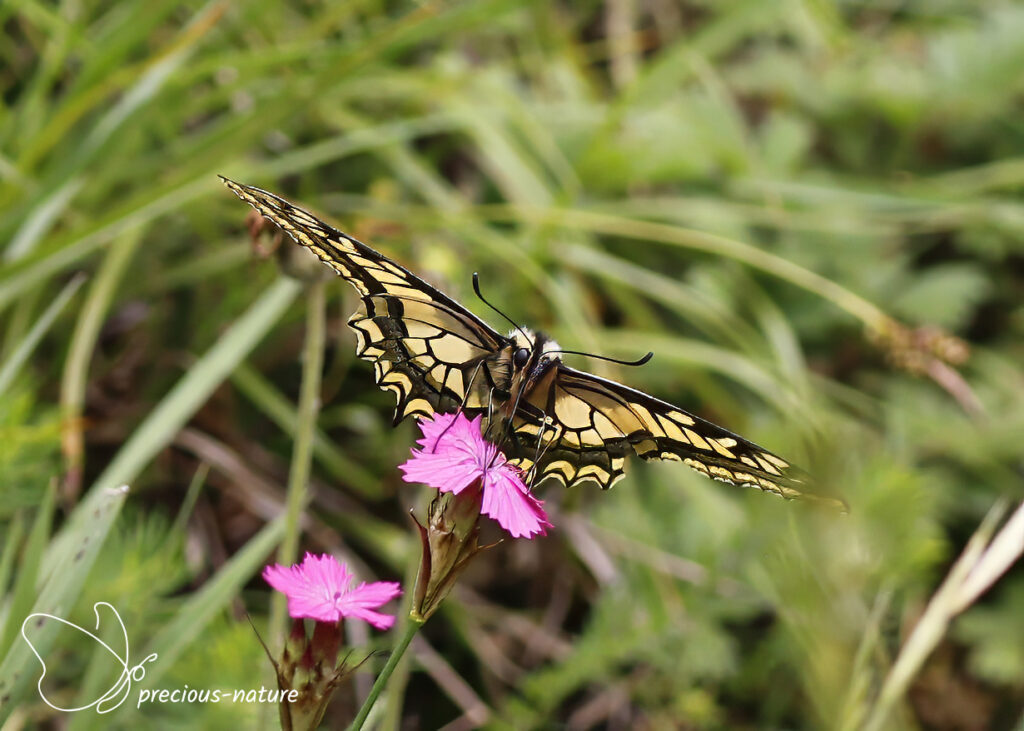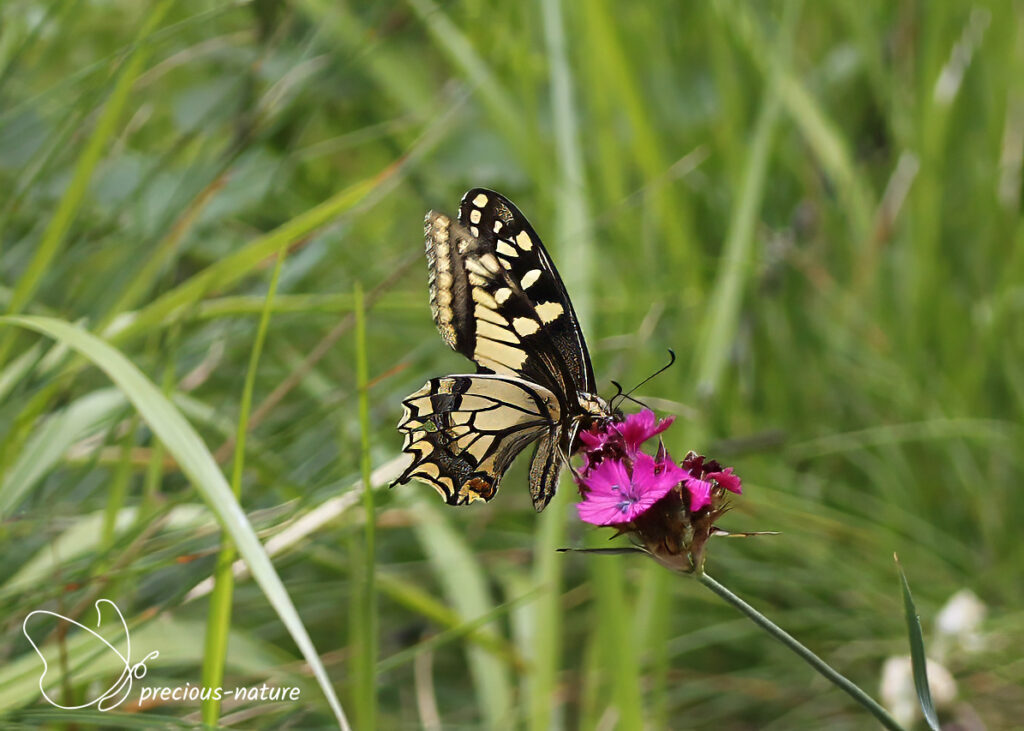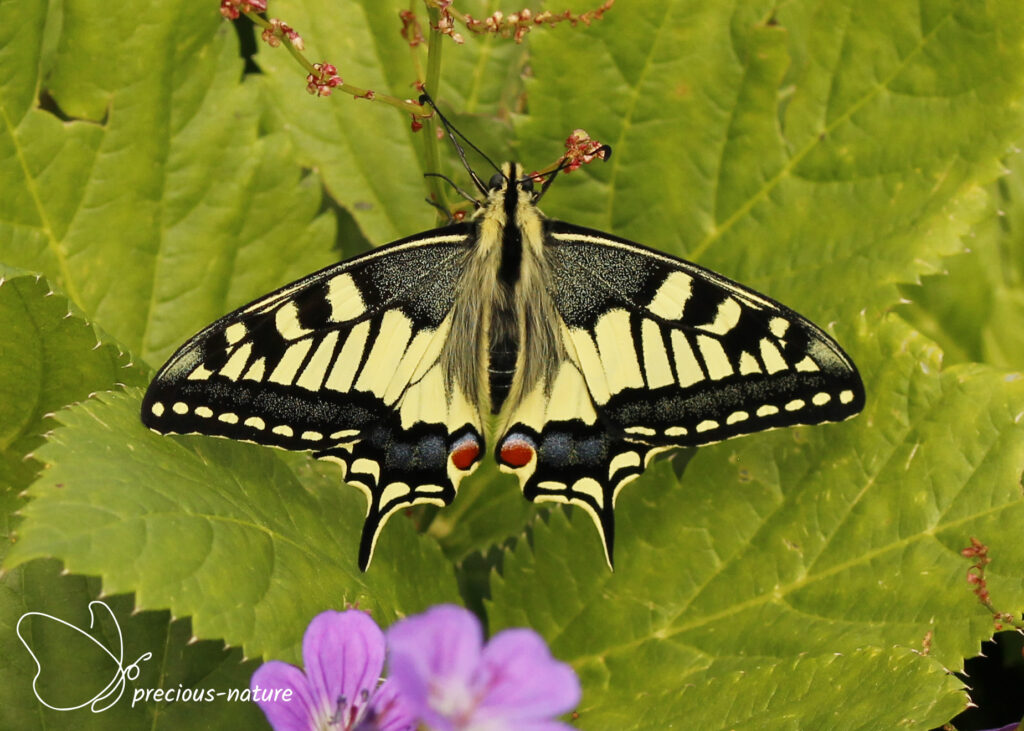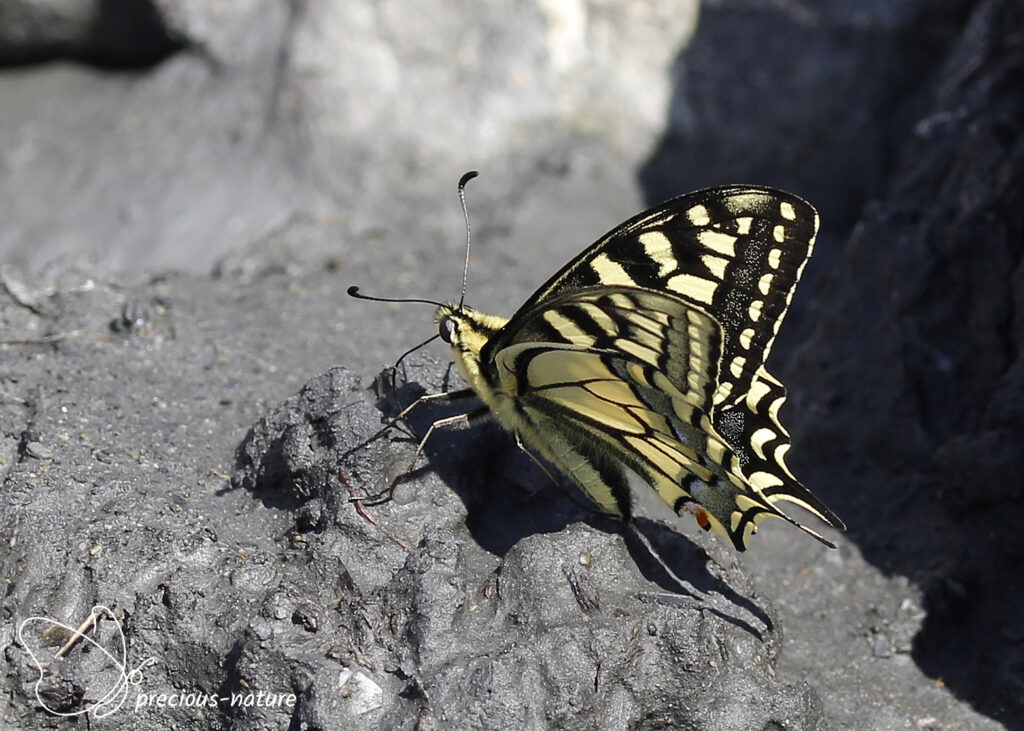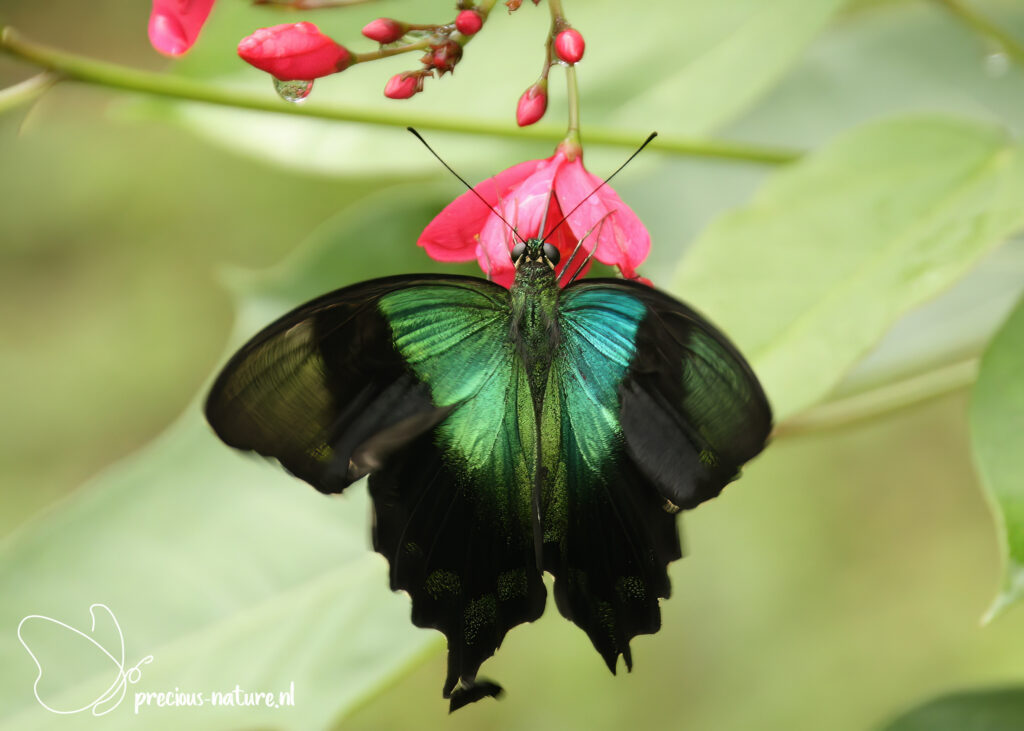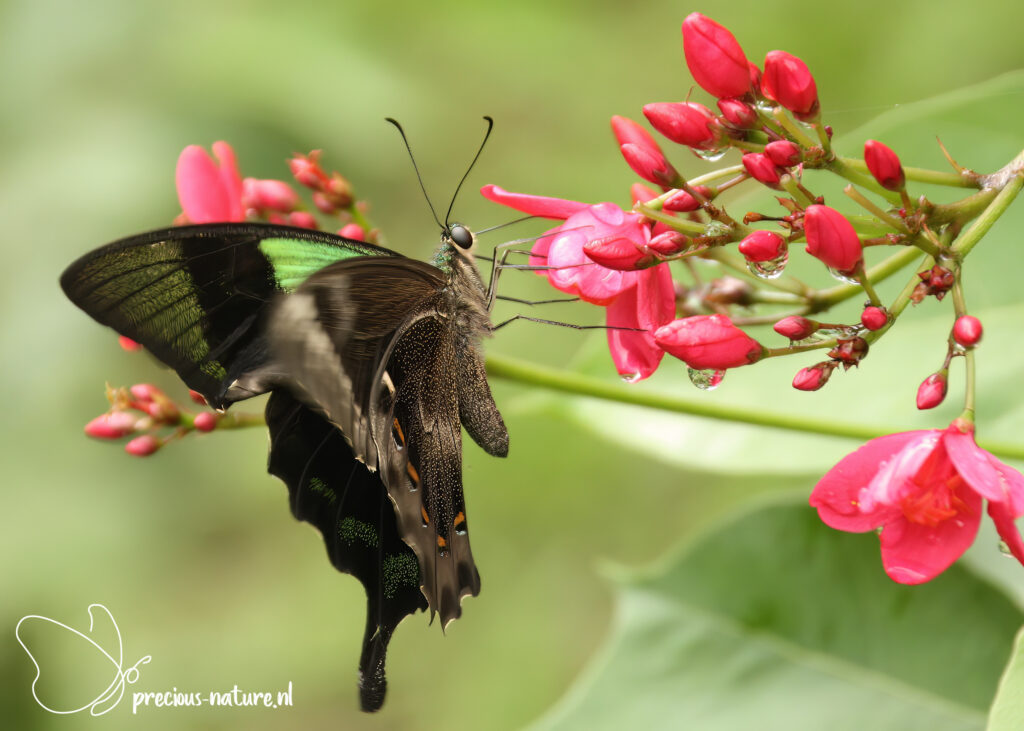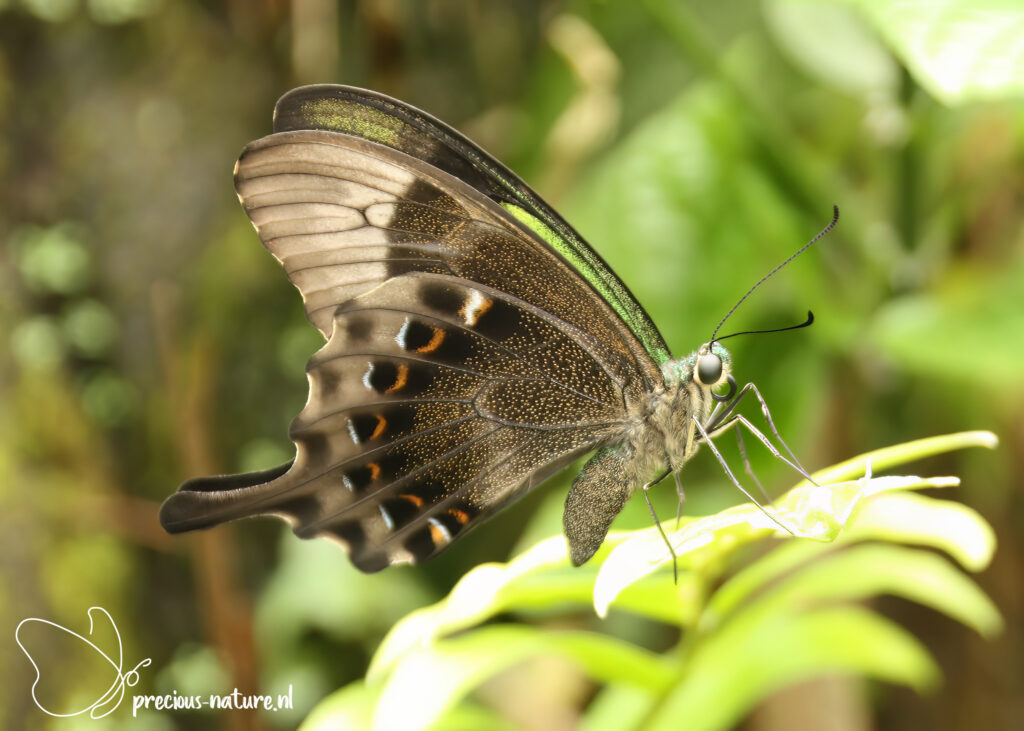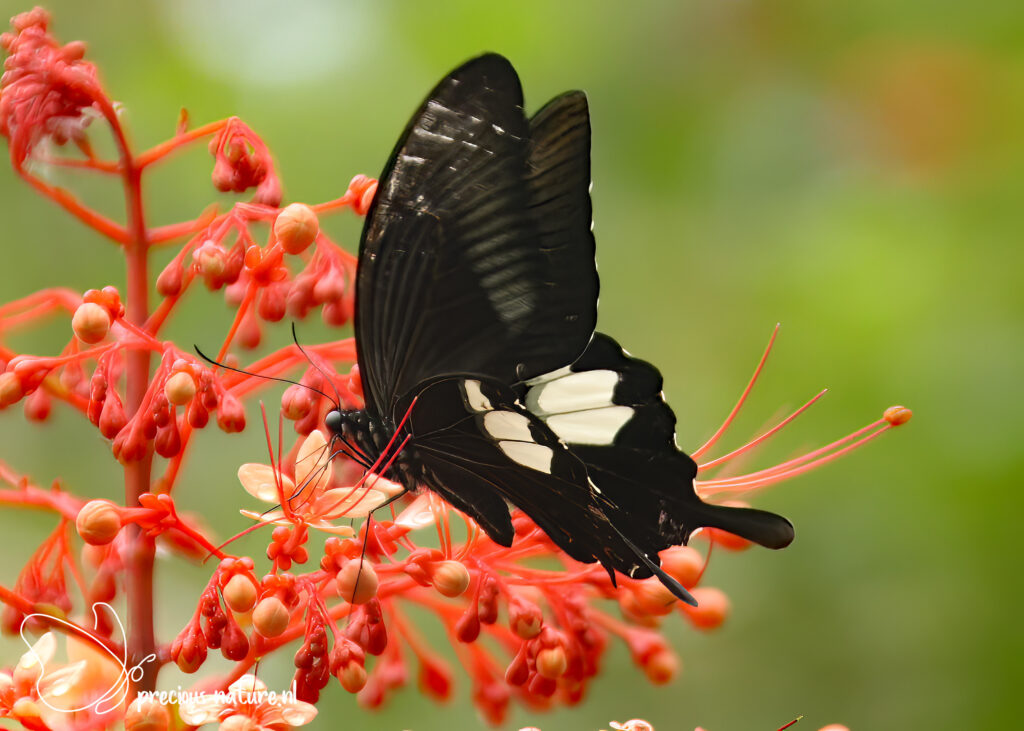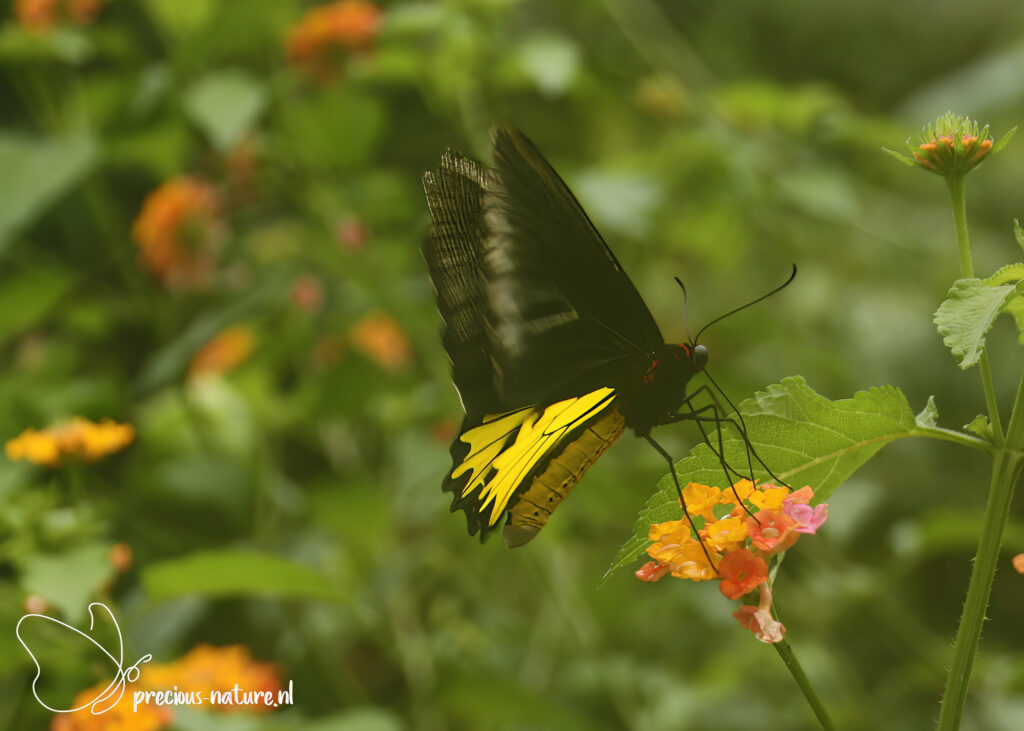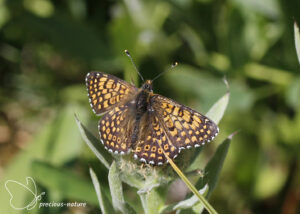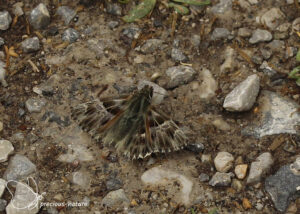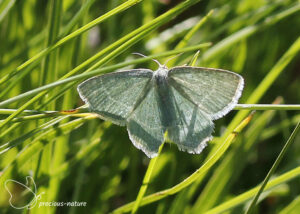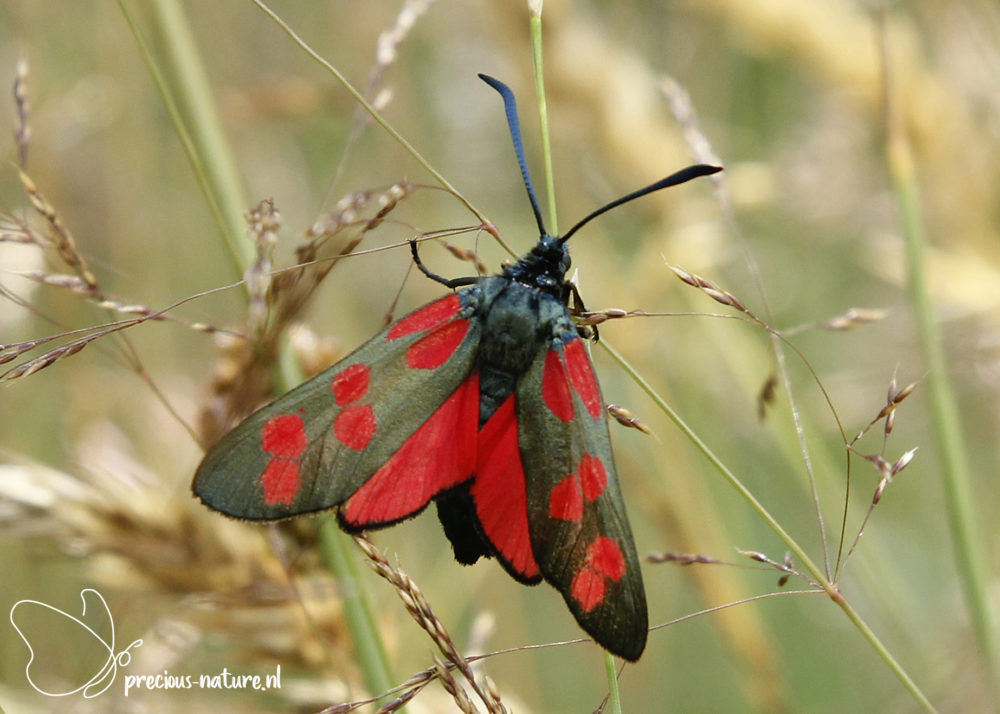The Swallowtails (Papilionidae) are a family of large, colourful butterflies that are recognisable to most people. The entire family comprises approximately 550 species worldwide, but only three are known in the Netherlands. This is because most species are found predominantly in tropical environments. Their name refers to the short tail that is situated on the edge of the hindwing. The function of this tail is unknown, but genetic studies in some species have shown that it is a labile trait of a specific gene. All swallowtails have three pairs of walking legs, and adults of all species visit flowers for nectar.
Subfamily: Papilioninae
Tribe: Graphiini
Genus: Iphiclides
Scarce Swallowtail – 2019 (BH)
(NCBI-index: 110791)
In the Netherlands, the Scarce Swallowtail (Iphiclides podalirius) is hardly seen. He only appears as a vagrant. During my holidays in Montenegro, where I took a day trip to Bosnia-Herzegovina with my daughter, we came across this swallowtail at a monastery. Unfortunately, it was a very damaged copy. The tails, which are normally on the dorsum of the hindwing, were completely gone. The base colour of the wings is white to cream colored. On the forewing, several wedge-shaped black stripes taper from the front edge of the wing to the middle. On the hindwing at the dorsum, some blue moon spots are outlined in black. Those were already gone with the specimen we have seen. The wingspan is 60-90 mm, and the flight period is from May to September for up to three generations. Host plant: Blackthorn. Dutch name: Koningspage. Frisian name: Keningspaazje.
Flying period:

Subfamily: Papilioninae
Tribe: Papilionini
Genus: Papilio
Swallowtail – 2019 (BH)
(NCBI-index: 76193)
To discover the Swallowtail (Papilio machaon) in the Netherlands, you should not be in the North. I spotted my first specimen in Trebinje (Bosnia and Herzegovina) where I was on holiday with my daughter. We were both very excited to see such a beautiful butterfly for the first time. It took quite a long time before this beautiful swallowtail sat down to be photographed. And when he sits down, it’s pretty remarkable that he sits exactly beside my daughter on her smartphone, which she had ready to take a photo. The wingspan of the Swallowtail is 80-90 mm and has wings with a yellow ground colour. On the top of the fore and hindwing, you can see a wide blue band along the termen that is outlined in black. At the termen of the hindwing is a tail, and you see a red spot at the inner edge corner. The body is yellow at the bottom and black at the top. The flight period spans two generations, from late April to September. Host plant: Wild Carrot, Wild Angelica. Dutch name: Koninginnepage. Frisian name: Keningjinnepaazje.
Flying period:

Subfamily: Papilioninae
Tribe: Papilionini
Genus: Papilio
Great Mormon – 2022 (INA)
(NCBI-index: 76198)
Of the Great Mormon (Papilio memnon), 13 subgenera are known. The subgenus that occurs in Bali is agenor. The males are monomorphic, and you see them much more often than the females. The males are always deep blue to black and have a red spot at the base of the underside of the wings. Unlike the females, they do not have a tail on the hindwing. The females display a wide variety of morphology and colours, with many mimicking other swallowtails. Morphological variations include the presence or absence of a tail on the hindwing, hindwing pattern, forewing pattern, colour of the basal triangle on the forewing, and body colour. The females of the agenor subgenus have a yellow color on the side of the abdomen, the upper side of the wings are grey-brown with black veins and elongated strokes, a red spot at the base of the wing, and a further black spot at the base of vein 1 and 2 with white stripes around it. The spot in the back corner is red with a large black spot. A row of red terminal points can be seen between the veins. The Great Mormon flies all year round and usually at a height of 2 to 4 meters. You see the males flying frequently, in contrast to the females, whom you hardly encounter. The wingspan is 120-150 mm. Host plant: a genus of citrus from the rue family (Rutaceae). Dutch name: Grote mormoonpage. Frisian name: –
Subfamily: Papilioninae
Tribe: Papilionini
Genus: Papilio
Swift Peacock Swallowtail – 2022 (INA)
(NCBI-index: 354223)
The official Dutch name is unknown for this large swallowtail. The Swift Peacock Swallowtail (Papilio peranthus) is mainly seen in Indonesia (including Java, Sulawesi, and the Sunda Islands) and flies along rivers and forest edges. There is a lot of trade with this beautiful butterfly because of its bright colours on the top of the wings. The name refers to the spots on the underside of the otherwise brownish hindwing. In these black spots that run in an arc across the wing, a thin orange stripe can be seen, and a white stripe on the outside. From the wing root towards these spots, the wings are dark brown with yellow speckles. The zoom field is significantly lighter in colour. This is very clearly visible at the bottom of the forewing. The top of both the fore and hind wings is black, and the first part from the wing root is colored blue-green. The wing tip at the top of the forewing is greenish, but in some specimens, it is almost invisible. Greenish spots can sometimes also be seen along the trailing edge of the hindwing, which further contributes to the name of this swallowtail. Like all swallowtails, the long tails can be seen on the hindwings. The wingspan is 70-90 mm. Host plant: Limeberry. Dutch name: Pauwoogpage. Frisian name: –
Subfamily: Papilioninae
Tribe: Papilionini
Genus: Papilio
Red Helen – 2022 (INA)
(NCBI-index: 76195)
The Red Helen (Papilio helenus) is often seen in tropical rainforests flying along forest paths with deep, irregular fluttering. Male butterflies are usually found alone or with two or three others visiting puddles, while the female looks for a place to lay eggs or hovers in the flowering shrub. This species is usually at rest with its wings fully extended. It has black-colored wings, and at the top of the wings, there is a large white spot on the hindwing that is hidden when the butterfly is resting, but noticeable when flying. There is an additional dusty white stripe on the forewings, while on the hindwings, there is a row of red crescent-shaped markings on the lower edge of the hindwings. The appearance of the underside of the wings is the same as that of the top. The flying period is throughout the year, and the wingspan is 80-115 mm. Host plant: Toddalia, Calamondin. Dutch name: Rode Helena. Frisian name: –
Flying period:

Subfamily: Papilioninae
Tribe: Troidini
Genus: Troides
Golden Birdwing – 2022 (INA)
(NCBI-index: 95589)
During my holiday in Bali, I discovered the Golden Birdwing (Troides amphrysus), which is quite common in Indonesia in montane forests at low to medium altitudes (30-1000 m). In males, the upper sides of the forewing are black or dark brown, with veins fringed by pale yellow. The upper side of the hindwing is golden yellow, with black veins and black spots on the edges. The base colour of the female is black or dark brown, with veins bordered by white. The upper side of the hindwing has a smaller golden-yellow area at the base and several yellow spots at the edges. In both sexes, the undersides are equal to the tops. The abdomen is yellow, while the head and thorax are black. In the morning, the butterflies fly at a height of 20 to 30 m in the canopy. Females rest on the foliage, while males glide above them in wide circles. The males perform an elaborate, vibrating seduction several feet above the females before mating. Later in the day, both sexes descend to feed on flowering trees and shrubs. The flight period is throughout the year, and the wingspan is 150-180 mm. Host plant: Indian Birthwort. Dutch name: Goudgekleurde page. Frisian name: –
Flying period:

Subfamily: Parnassiinae
Tribe: Parnassini
Genus: Parnassius
Subgenus: Driopa
Clouded Apollo – 2024 (CH)
(NCBI-index: 213953)
The Clouded Apollo (Parnassius mnemosyne) was one of the main goals of my trip to the Swiss Alps. In the early morning, we saw a specimen flying over longer distances, but it did not sit still at a distance that was reachable. During lunch, we had more luck. Very close by, a specimen sat still. This large white butterfly looks a bit like the Black-veined White (Aporia crataegi), but the Clouded Apollo is slightly greyer and has two black spots in the middle cell of the forewing and the discal cell of the hindwing. The wingtip of the forewing is transparent, and a broad black band runs along the inner edge of the hindwing. The female’s abdomen is glossy black with yellow spots on the side. The abdomen of the male is heavily dark, with grey hair. The flight period is one generation from mid-April to the end of August, and the wingspan is 52-68 mm. Host plant: Bulbous Corydalis. Dutch name: Zwarte apollovlinder. Frisian name: –
Flying period:


